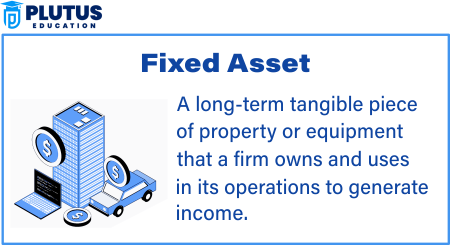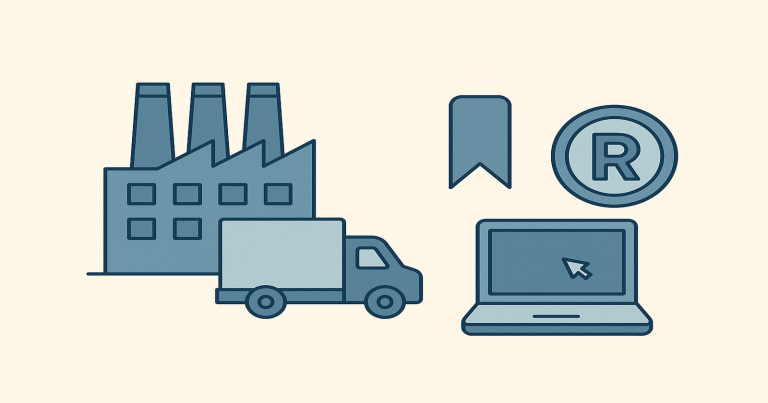In every business, certain things help the company work for many years. These are not for sale, but they are very important for daily tasks. Items like land, buildings, machines, vehicles, and computers are examples of Fixed assets. So, What is a fixed asset? A fixed asset is any long-term item that a business uses for more than one year to help make or sell products or services. These fixed assets help in daily operations and are not bought to sell quickly. For example, a school uses benches, buses, and blackboards every day. These items are fixed assets because they stay useful for many years. They are not part of daily trade like pens or notebooks, which come under current assets. Fixed assets help the business grow. They are also called non-current assets because they stay in use for a long time. They lose value over time due to use, and that loss is called depreciation. Every business needs to keep a record of fixed assets to know how much they are worth after a few years.
What is a Fixed Asset?
A fixed asset is a long-term resource that a company uses to run its business. It stays in business for more than one year. These assets are not meant to be sold during normal business activities. Instead, they help the business work every day.
These items are used again and again. They do not change quickly like stock or cash. A fixed asset loses value over time. This is called depreciation. Depreciation shows the true value of the asset each year.Fixed assets are shown in the balance sheet. They are different from current assets like stock, bank balance, or accounts receivable.They are also known as “non-current assets” or “long-term assets.” In simple terms, if something helps the business work for more than one year and is not for sale, it is a fixed asset.

Types of Fixed Assets
Fixed assets help a business run smoothly for a long time. These assets are not bought for selling. They are used again and again in business work. Fixed assets are mainly of two types — tangible fixed assets and intangible fixed assets. Both are used in the business, but they are different in form and value.
Let’s understand each type in simple words with examples.
Tangible Fixed Assets
Tangible fixed assets are those assets that you can see and touch. These are physical items that a company uses for many years. They have a clear shape and size. Businesses use these every day in their work.
Features of Tangible Fixed Assets:
- They are physical (can be touched).
- They are used for long-term business work.
- Their value reduces each year (depreciation).
- They are shown in the balance sheet as part of non-current assets.
Examples of Tangible Fixed Assets:
- Land – Space owned by the business. It does not depreciate.
- Buildings – Offices, factories, and shops used for work.
- Machinery – Used in production. For example, textile machines.
- Vehicles – Company trucks, vans, and cars used in transport.
- Furniture and Fixtures – Chairs, tables, fans, lighting, etc.
- Computers and Equipment – Printers, monitors, servers, etc.
Tangible assets help in production, service, storage, and communication. These are visible and can be moved (except land/buildings).
Intangible Fixed Assets
Intangible fixed assets are non-physical. You cannot see or touch them. But they still have value. These are rights or ideas that help a company grow or operate better.
Features of Intangible Fixed Assets:
- They are not physical.
- They provide long-term business value.
- Their value also reduces over time (amortization).
- They are shown in the balance sheet under fixed assets.
Examples of Intangible Fixed Assets:
- Goodwill – Value of a company’s brand or name.
- Patents – Rights to make or sell a unique product.
- Trademarks – Logos or names registered by a business.
- Copyrights – Rights to creative work like books, software, music.
- Licenses – Permission from the government to run a business.
- Software – Purchased digital tools that support business functions.
Even though you can’t see these assets, they are very valuable. For example, a popular brand name like “Tata” or “Reliance” adds big value. That value is called goodwill.
Importance of Fixed Assets
Fixed assets are very important for every business. Without them, the business cannot work smoothly. They help in production, service delivery, and storing goods.
Here are some key reasons:
1. They Help in Daily Operations
Fixed assets are used every day. A shop uses shelves and lights. A delivery company uses trucks. A school uses benches and boards. These are part of daily business life.
2. They Help Produce Goods or Services
Machines help make products. Computers help send emails or create files. These assets make it easy to do business and serve customers.
3. They Add Value to the Business
More fixed assets mean more business power. Investors and banks look at fixed assets to decide if the company is strong. It shows the company’s size and growth.
4. They Help in Getting Loans
Banks give loans easily if the business owns good fixed assets. They act as security or mortgage.
5. They Show Long-Term Planning
Buying a fixed asset means the business is thinking about the future. It shows growth, planning, and smart investment.
6. They Reduce Tax Through Depreciation
Fixed assets lose value. The loss is called depreciation. This reduces profit and helps in saving tax.
In short, fixed assets are the building blocks of any business. They support work, growth, and planning.
Accounting Treatment of Fixed Assets
Every business must keep a record of its fixed assets. This helps in knowing the true value of the business.
How Are Fixed Assets Recorded in Accounts?
Businesses follow rules to record fixed assets. These rules help in showing the correct value.
1. Initial Recording
- When a business buys a fixed asset, it records the cost.
- This includes purchase price, transport cost, and installation.
2. Depreciation
- Every fixed asset loses value over time.
- This loss is called depreciation.
- Depreciation is calculated every year.
- It is shown as an expense in the profit and loss account.
3. Carrying Value
- This is the value of the asset after depreciation.
- For example, if a laptop costs ₹50,000 and loses ₹10,000 every year, its value after two years will be ₹30,000.
4. Disposal of Assets
- When a company sells or scraps an asset, it removes it from records.
- Any profit or loss is also recorded.
Accounting treatment helps know the real value of the company’s property. It is also useful for tax and audit purposes.
What is a Fixed Asset FAQs
1. What is a fixed asset?
A fixed asset is a long-term item used in a business for more than one year. It includes things like land, buildings, machines, and vehicles.
2. Is furniture a fixed asset?
Yes, furniture is a fixed asset. It is used for many years in a business and is not meant for sale.
3. What is the difference between fixed and current assets?
Fixed assets are used for long-term work. Current assets are used or sold in short time, usually within a year.
4. What is capital expenditure?
Capital expenditure is money spent to buy or upgrade fixed assets. It is not a regular business cost but is used to increase asset value.
5. How is depreciation related to fixed assets?
Depreciation reduces the value of a fixed asset every year. It shows the wear and tear of the asset due to use.
6. Are intangible assets fixed assets?
Yes, intangible assets like patents or trademarks are fixed assets. But they are not physical. You cannot touch them.


